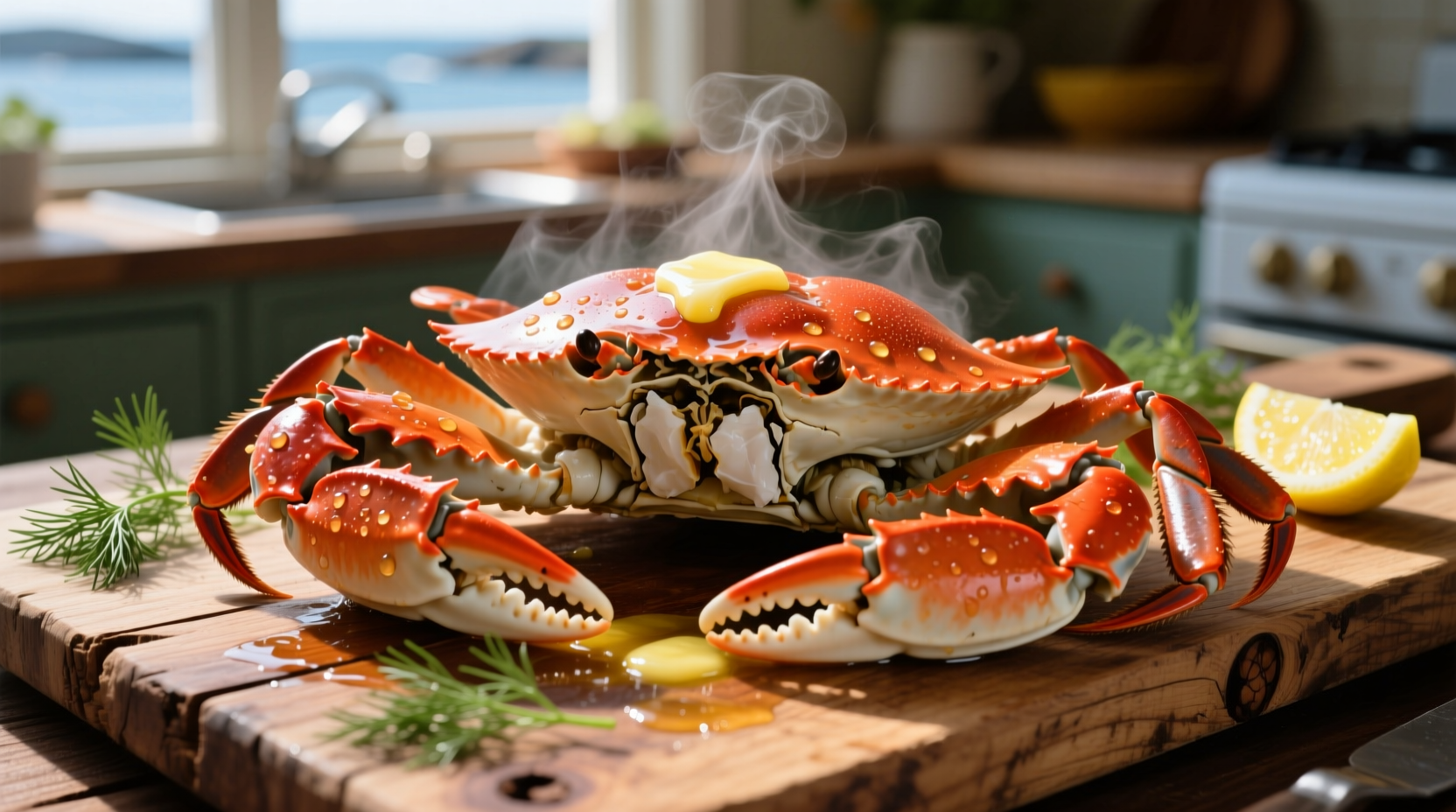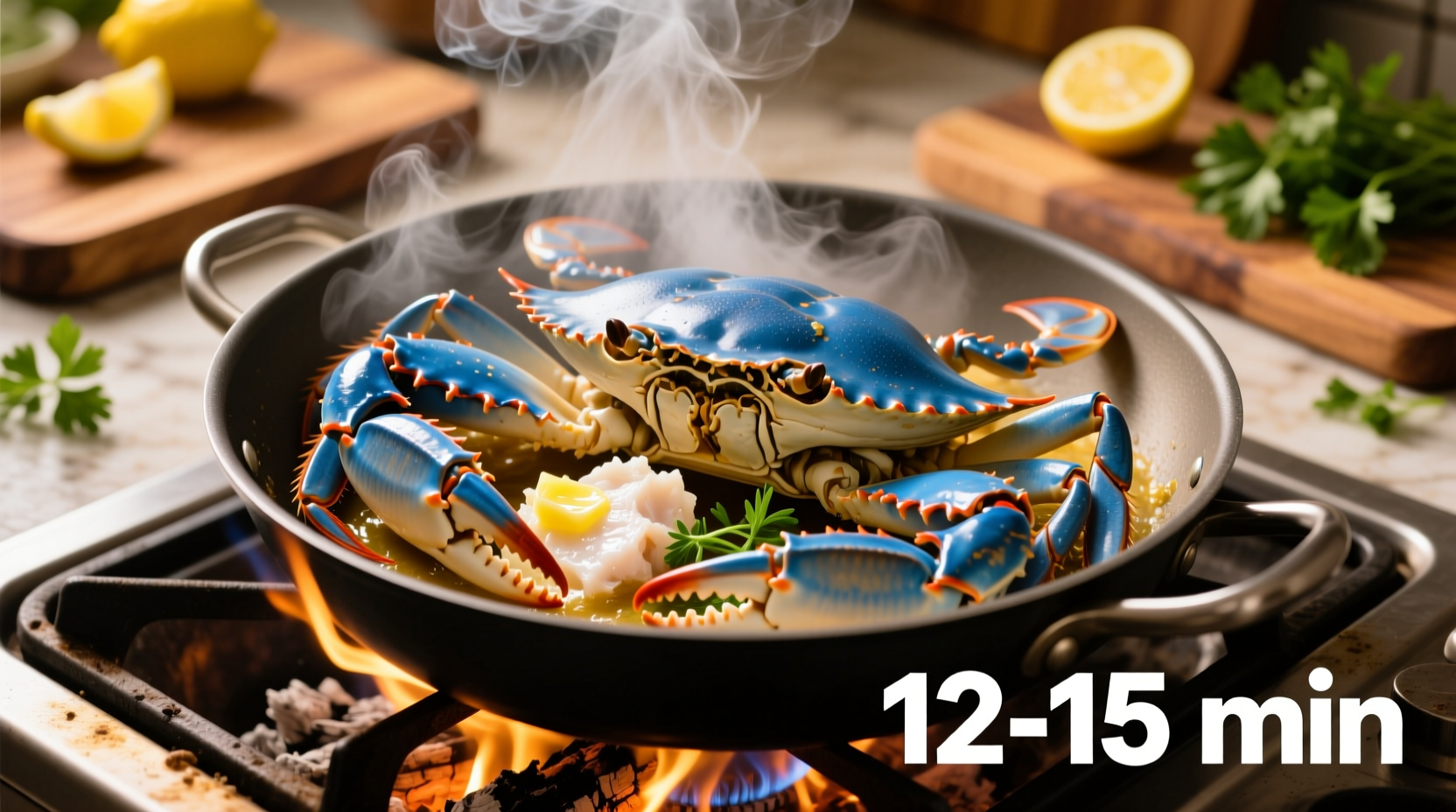The ideal cooking time for crab depends on the method and size: boil 10-20 minutes, steam 15-25 minutes, or bake 15-20 minutes at 375°F until shells turn bright red and meat is opaque.
Perfect Crab Cooking: Times, Techniques, and Troubleshooting
Cooking crab properly transforms sweet, delicate meat from raw to restaurant-quality perfection. Get it wrong and you'll face rubbery texture or unsafe undercooking. This guide delivers precise timing for every method, backed by seafood science and professional chef techniques.Why Cooking Time Matters for Crab
Crab meat contains delicate proteins that denature rapidly with heat. Undercooked crab risks foodborne illness from Vibrio bacteria, while overcooking causes proteins to contract excessively, squeezing out moisture. The FDA Food Code specifies that seafood must reach 145°F internal temperature for safety, but visual cues matter more with whole crabs where thermometer use is impractical.| Crab Type | Boiling Time | Steaming Time | Baking Time |
|---|---|---|---|
| Dungeness (1-1.5 lbs) | 10-12 minutes | 15-18 minutes | 15-18 minutes |
| Blue Crab (5-6 oz) | 8-10 minutes | 12-15 minutes | 12-15 minutes |
| King Crab Legs (per lb) | 5-7 minutes | 6-8 minutes | 10-12 minutes |
| Soft-Shell Crab | 3-4 minutes | 4-5 minutes | 6-8 minutes |
Boiling Crab: The Classic Method
Boiling delivers consistent results when you follow these steps:- Fill a large pot with enough water to cover crabs, adding 1–2 cups salt per gallon
- Bring to rolling boil before adding live crabs headfirst (reduces suffering)
- Cook for 10-20 minutes depending on size (see table above)
- Remove immediately when shells turn bright red

Steaming Crab: Preserving Natural Flavor
Steaming produces slightly sweeter meat by avoiding water dilution:- Use a crab pot with steamer basket and 2 inches of seasoned water
- Bring liquid to vigorous boil before adding crabs
- Cook 15-25 minutes until shells turn bright red
- Check doneness by pulling a leg—meat should separate easily
Baking Crab: For Pre-Cooked or Leg Portions
Baking suits pre-cooked crab legs or stuffed preparations:- Preheat oven to 375°F
- Wrap legs in foil with melted butter and seasonings
- Bake 10-15 minutes for pre-cooked legs
- Check internal temperature reaches 145°F
Visual Doneness Indicators: Beyond Timing
Timing provides a baseline, but these visual cues confirm perfect doneness:- Shell Color: Turns vibrant red-orange (except for snow crab, which lightens)
- Meat Texture: Opaque white, not translucent
- Leg Movement: Legs pull away from body easily
- Aroma: Sweet, oceanic scent without ammonia notes
Avoiding Common Crab Cooking Mistakes
Professional chefs consistently identify these errors:- Overcrowding Pots: Reduces water temperature, leading to uneven cooking
- Adding Crabs to Cold Water: Causes prolonged suffering and texture issues
- Ignoring Size Variations: A 2lb Dungeness needs 25% more time than a 1.5lb
- Skipping the Ice Bath: For boiled crabs, plunge in ice water immediately after cooking to stop residual heat
Special Considerations for Different Crab Types
Different species require tailored approaches:- Dungeness: Cook live for best results; discard any that float (already dead)
- Blue Crab: Requires shorter cooking; overcooking makes meat stringy
- King Crab Legs: Often pre-cooked—just needs reheating to 145°F
- Soft-Shell: Cook 3-5 minutes max; shells become edible when properly cooked
Food Safety Essentials for Crab Preparation
The FDA recommends these critical safety practices:- Never cook dead crabs—they spoil rapidly after death
- Keep live crabs cold (32-40°F) until cooking
- Consume cooked crab within 2 hours at room temperature
- Store leftovers in airtight container for up to 3 days











 浙公网安备
33010002000092号
浙公网安备
33010002000092号 浙B2-20120091-4
浙B2-20120091-4